How To Care For Chinese Money Plant (Pilea Peperomioides)
Chinese money plants prefer bright but indirect light and well-draining soil. As far as watering is concerned, water them only when the top inch of soil feels dry. Also, provide some support to the plant & keep rotating the pot to prevent leaning.
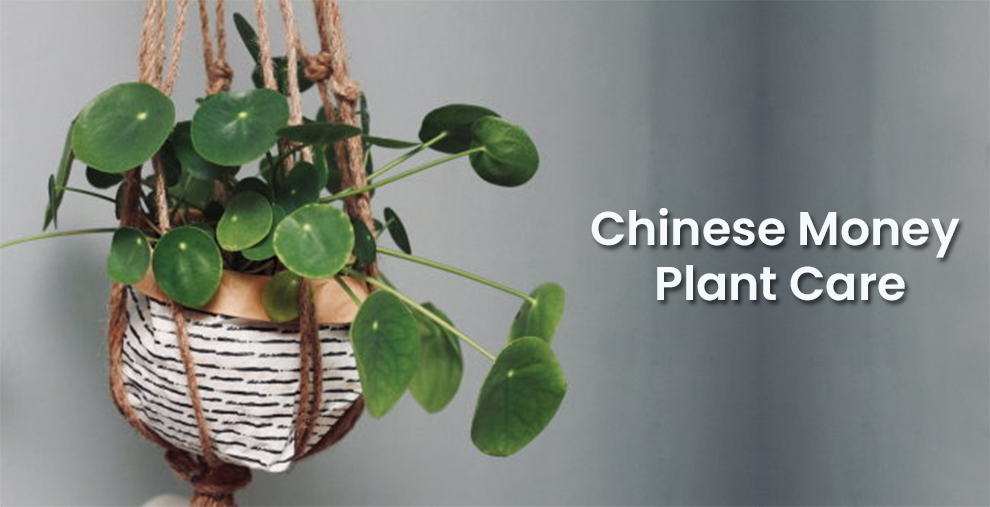
When it comes to indoor plants, there is no plant more adorable and lovable than the Chinese money plant or Pilea peperomioides. Besides being aesthetically appealing, Pilea also brings prosperity and good fortune to your home.
Though Chinese money plant care is simple, and it does not require much maintenance. Keep in mind that if you give your plant the right kind of care, you can keep them looking gorgeous and bring in positive vibes.
One of the crucial things to keep in mind when caring for a Chinese money plant is to provide it with bright indirect light and to avoid direct sunlight, which can scorch its leaves.
In Pilea plant care, watering is also an important aspect. You should always water the plant when the top inch of soil feels dry to touch. Make sure to use well-draining soil to prevent root rot.
Chinese money plants prefer temperatures between 60-75°F (15-24°C) and higher humidity levels, so consider using a humidifier or placing a tray of water near the plant.
Additionally, feeding the plant with a balanced fertilizer every 4-6 weeks during the growing season (spring and summer) can promote healthy growth. Finally, pruning the plant can promote bushier growth and remove any damaged or yellowing leaves.
Let’s move on to the crucial care tips in detail to ensure your Chinese money plant thrives.
How To Care for Chinese Money Plant The Right Way?
Pilea peperomioides is generally considered an easy-to-care-for indoor plant type, making it a great choice for beginners or anyone looking for a low-maintenance houseplant.
However, it’s important to remember that even easy-to-care-for plants still need some basic care to grow, including proper watering, lighting, and soil.
A. Soil Requirements
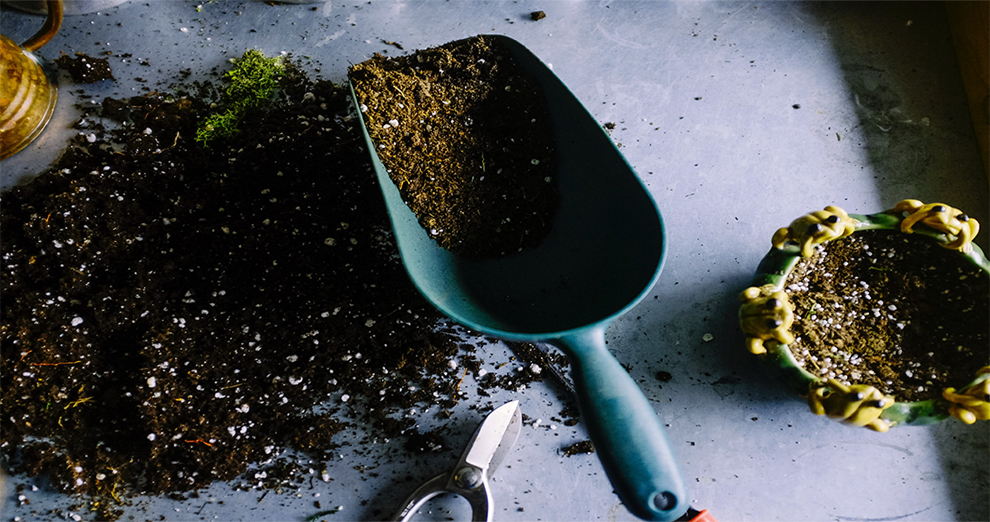
Pilea peperomioides, commonly known as the Chinese money plant, prefers well-draining soil that is rich in nutrients.
For those wanting to learn Chinese money plant care, an important lesson is that the mixture of 2 parts potting soil, 1 part perlite, and 1 part peat moss can provide the ideal growing medium for the plant.
This mixture provides good drainage and moisture retention, while also providing the plant with the nutrients it needs.
Avoid using heavy, compacted soils that can hold too much moisture and lead to root rot as Pilea peperomioides prefers soil that is light and airy.
Adding a small amount of worm castings or compost to the soil can help provide additional nutrients for your Pilea. If your soil mixture is too heavy, you can add some sand to improve drainage and loosen up the soil.
B. Sunlight Requirements
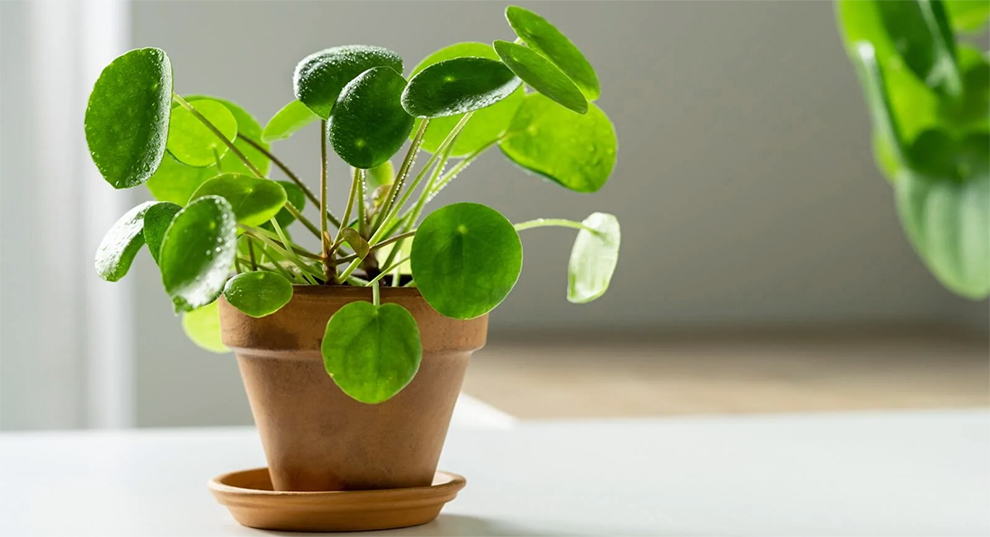
Pilea peperomioides thrive in bright, indirect light so placing your plant near a window that receives bright, indirect light can help it thrive.
While Pilea peperomioides likes bright light, it’s important to avoid placing it in direct sunlight, as this can scorch the leaves. To ensure that all sides of your plant receive adequate light, rotate the plant every few weeks.
Since, Chinese money plant likes bright indirect light, how to care for pilea Chinese money plant if you don’t have access to sunlight? Well, you can always use artificial light to provide your Pilea with the light it needs. LED grow lights can be a great option for providing the right spectrum of light for your plant.
Keep an eye on your Pilea to see how it’s responding to the amount of light it’s receiving. If the leaves start to turn yellow or brown, it may be getting too much direct sunlight, while pale or small leaves may indicate that it needs more light.
C. Watering

Proper watering is important in Pilea plant care. The plant prefers well-draining soil, so be sure not to overwater the plant. Allow the top inch or so of soil to dry out before watering again.
When you do water your Pilea, be sure to water thoroughly, allowing water to soak into the soil and drain out the bottom of the pot. Avoid letting the plant sit in standing water.
Use room temperature water when watering your Pilea, as cold water can shock the roots. During the winter or in low-humidity environments, you may need to water your Pilea less frequently, while in warm or humid environments, you may need to water it more often.
If the leaves start to droop or wilt, it may be a sign that the plant needs more water, while yellowing leaves may indicate overwatering.
D. Humidity and Temperature Needs
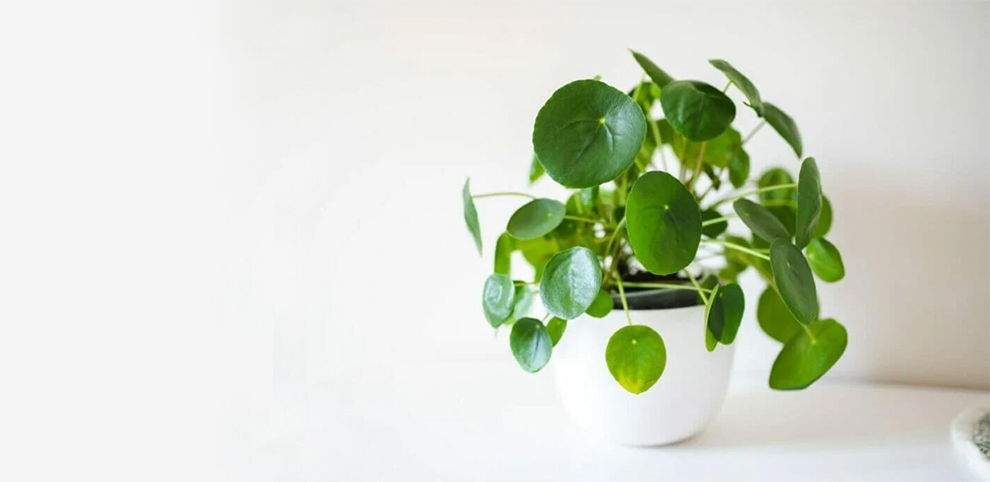
Pilea peperomioides prefers moderate to high levels of humidity and temperatures between 60-75°F (16-24°C). You can increase humidity around your plant by misting it with water, using a humidifier, or placing a tray of water near the plant.
Avoid placing your Pilea near sources of dry air, such as heating or cooling vents or drafty windows, as this can cause the leaves to dry out. Keep an eye on your Pilea to see how it’s responding to the temperature and humidity levels in its environment.
If the leaves start to droop or curl, it may be a sign that the humidity is too low, or the temperature is too high. Placing a tray of pebbles and water underneath your Pilea can help increase humidity around the plant.
E. How To Care for A Pilea Plant Feed (Fertilizer)
Pilea peperomioides typically have a growing season from spring to early fall, so this is the time to provide it with nutrients. A balanced fertilizer contains equal amounts of nitrogen, phosphorus, and potassium (NPK).
You must look for a fertilizer with an NPK ratio of 10-10-10 or 20-20-20. Pilea peperomioides is a delicate plant, so you should dilute the fertilizer to half-strength before applying it.
This will prevent the burning of the roots and foliage. Apply the diluted fertilizer every 2-4 weeks during the growing season. Water the plant thoroughly before applying the fertilizer to help prevent root burn, and water again after fertilizing to help distribute the nutrients throughout the soil.
Pilea benefits from regular fertilization during the growing season (spring and summer). Use a balanced fertilizer once a month, following the instructions on the packaging.
F. Pruning
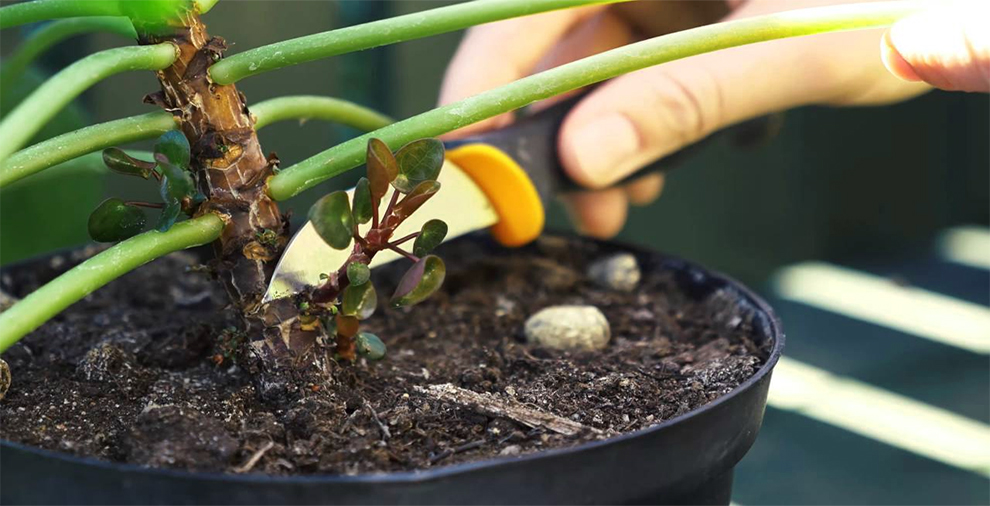
Pruning is crucial in Chinese money plant care and should be done during the plant’s growing season as it will allow the plant to recover more quickly.
Remove any yellow or damaged leaves by cutting them off at the base of the stem. This will help prevent disease and pests from spreading to other parts of the plant. To encourage bushier growth, pinch back the tips of new growth with your fingers.
This will cause the plant to branch out and produce more leaves. If your Pilea peperomioides have long, leggy stems, you can trim them back to promote fuller growth.
Cut the stem back to just above a leaf node, which is the point where a leaf attaches to the stem. You can also use the trimmed stems to propagate new plants.
Simply cut a stem with several leaves and place it in water or soil to root. Remember to use clean, sharp pruning shears or scissors to avoid damaging the plant.
Also, be careful not to prune too much at once, as this can stress the plant. Instead, spread out the pruning over several sessions.
G. Supporting The Plant/Trailing
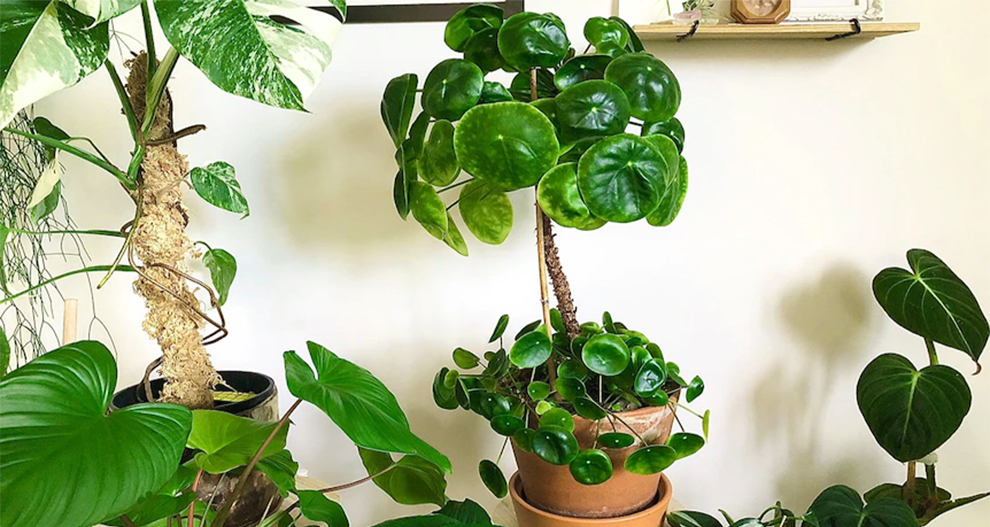
Pilea peperomioides is a trailing plant that can benefit from some support to help it maintain its shape and prevent it from becoming too leggy. Knowing how to care for pilea peperomioides and providing support to its growing habits is very crucial.
You can stake your plant by inserting a stake into the soil and tying the plant to it with soft ties. This will help support the stems and prevent them from bending or breaking.
Another option is to use a trellis to support the plant. You can place a trellis behind the plant and train the stems to grow up and over it. If you prefer to let your Pilea peperomioides trail, you can hang it in a basket or planter.
Pinching back the tips of the stems can also help encourage bushier growth, which can make the plant look fuller and more attractive. Regular pruning can also help keep the plant in shape and prevent it from becoming too leggy.
Remove any long, spindly stems or leaves that are getting too large and taking over the plant. Remember to use soft ties or clips when supporting your Pilea peperomioides, as the stems can be delicate and easily damaged.
H. Repotting
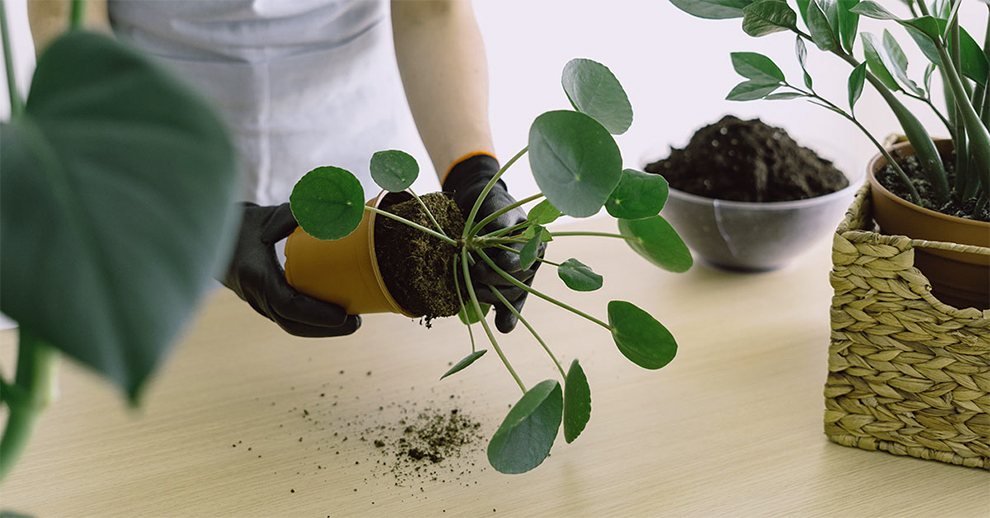
Repotting your Pilea peperomioides is an important part of Pilea plant care and ensuring its continued growth and health. The best time to repot your Pilea peperomioides is in the spring, just as new growth is starting.
Select a pot that is one size larger than the current one. Pilea peperomioides prefers well-draining soil, so make sure the pot has drainage holes in the bottom. Use a well-draining potting mix that is rich in organic matter.
You can also mix in some perlite or sand to improve drainage. Check the roots for any signs of damage, such as rot or pests. If you see any problems, trim away the damaged roots with clean scissors.
After repotting, give the plant a thorough watering to help settle the soil and hydrate the roots.
Remember to gradually acclimatize your Pilea peperomioides to its new pot and growing conditions, as sudden changes can stress the plant. Give it some time to adjust and soon you will see new growth and a healthier plant.
I. The Best Pot for Pilea
Pilea peperomioides prefer to be slightly root-bound, so choose a pot that is only slightly larger than the current one. A pot that is too large can lead to waterlogging and root rot.
Make sure the pot has drainage holes in the bottom to allow excess water to drain away. The plant prefers well-draining soil and can be prone to root rot if left in standing water.
Pots made from terracotta or other porous materials can help regulate moisture levels in the soil and prevent overwatering, therefore they work the best when it comes to Chinese money plant care.
Pilea peperomioides is a relatively shallow-rooted plant, so a wider, shallow pot may be better than a deep one. This can help promote more lateral root growth and prevent the plant from becoming too top-heavy.
How To Propagate Pilea Peperomioides?
Here are some ways to propagate Chinese money plant (pilea peperomioides):
1. Propagate from stem cuttings: Take a stem cutting that has a few leaves and a node (where the leaves meet the stem). Remove the lower leaves, leaving only a couple of leaves at the top. Place the cutting in a glass of water or directly in a pot with well-draining soil. In a few weeks, roots will form, and a new plant will start to grow.
2. Propagate from plantlets: Pilea peperomioides produce small plantlets that grow from the base of the parent plant. These can be gently removed and planted in a pot with well-draining soil.
3. Propagate from leaf cuttings: Although it is less common, you can also propagate pilea peperomioides from a single leaf. Take a healthy leaf and cut it at the stem. Place the stem in water or directly in the soil, making sure that the stem is in contact with the soil. In a few weeks, roots will form, and a new plant will start to grow.
Regardless of the method you choose, it’s important to keep the soil moist and in a warm, bright spot, but out of direct sunlight. Once your new plants have established themselves, you can treat them as you would any other Pilea Peperomioides.
Related: Houseplants That Grow In Water|Money Tree Lifespan
How To Take Care Of Chinese Money Plant Against Pests & Diseases?
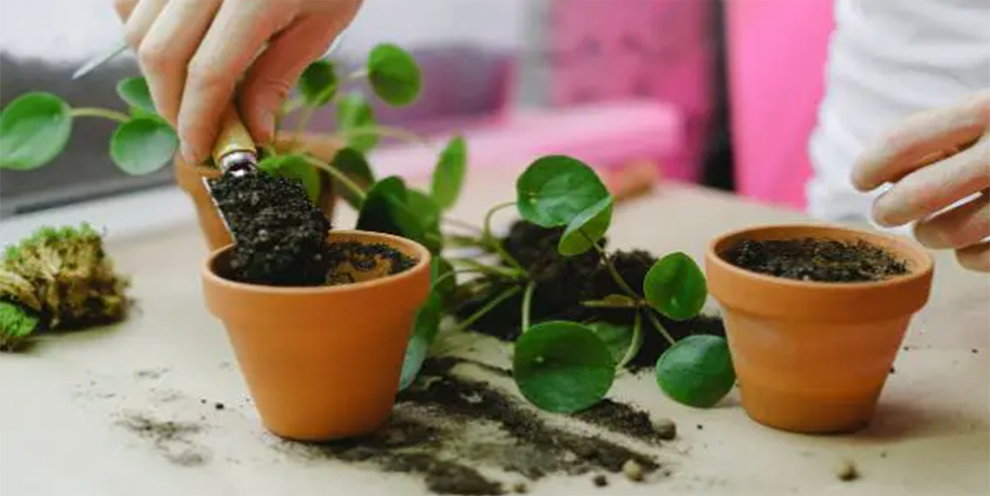
Money plants are also prone to diseases. As for Pilea Peperomioides problems you should know that like all houseplants, pests like Spider mites can cause yellowing and stippling on the leaves of your plant. To get rid of spider mites, use a strong stream of water to rinse the leaves, or use an insecticidal soap.
Other pests include Mealybugs that are white, cottony pests found on the undersides of leaves and stems. They can cause stunted growth, leaf drop, and yellowing of leaves. To get rid of mealybugs, use a cotton swab dipped in rubbing alcohol to wipe the pests off the plant, or use an insecticidal soap.
Pilea peperomioides can be susceptible to fungal diseases such as root rot, which is caused by overwatering. To prevent fungal diseases, make sure the soil is well-draining, and don’t let the plant sit in water for too long.
If you suspect your Pilea has root rot, remove the plant from the soil, cut away any diseased roots, and repot it in fresh, well-draining soil.
Yellowing leaves are another problem that this plant encounters. It can be a sign of overwatering, underwatering, or exposure to direct sunlight.
Make sure your Pilea is not sitting in water for too long, and adjust the watering frequency as needed. If the plant is getting too much direct sunlight, move it to a spot with more indirect light.
If you notice stunted growth then it can be a sign of nutrient deficiencies. In Pilea plant care as fertilizer is important, make sure your Pilea is getting the right amount of fertilizer and your plant is rooted in nutrient-rich soil.
